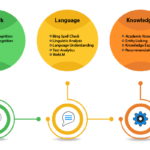Computer System Validation (CSV) is the practice of ensuring that any software or hardware which meets its purpose with regulatory guidelines.
The pharmaceutical business model is emerging, and CSV is becoming even more crucial because of the increasing scope of information systems, more integrated functionality, consolidation, and archiving requirements.
It helps companies to maintain its quality standards.
US FDA defines CSV as establishing documented evidence which provides a high degree of assurance that a specific process will consistently produce a product meeting its pre-determined specifications and quality attributes.
CSV takes place during the Software Development Life Cycle & It performs many activities like Static testing and Dynamic testing.
CSV is a risk based effort which focus on data integrity, patient safety and product quality.
Finally, CSV brings a system that is as robust as it is compliant.
Our experts follow guidance like US FDA 21 CFR part 11, Eudralex volume 4 Annexure 11 and Good Automated Machine Practices 5 (GAMP5), to provide best validation services for Software Validation in Pharmaceutical/Life Science Industry.
CSV approach to SDLC
Computer System Validation (CSV), as we know, is an approach to ensure that software and/or application, system hardware, different equipment’s, etc. function/operate and provide the actual results within the acceptable criteria in line with the regulatory guidelines.
And, Software Development Life Cycle (SDLC) methodology is used by the software development industry to understand customer requirements and then, start the design, development and test high quality software product which meets customer expectations.
From the brief as above said, the methodology of CSV and SDLC is close to each other.
For example, V model of CSV is similar to the Waterfall model of SDLC.
Both are sequential type models that mean that the next phase can start only after completion of the previous phase. Requirements have to be apparent and clear before the project starts and requirements cannot change dynamically during the course of project completion because it is usually costly to go back and do any changes after the project starts. This type of model is basically used in life science and pharmaceuticals industries. and if debated on, Agile methodology has and is gaining momentum for its simplicity, “less” complicated, flexibility, dynamism…
Although CSV is an approach similar to the SDLC but also keep in mind the GxP, Part 11 (21 CFR part 11 & Annex 11), and other regulatory guidelines, GAMP approach, that has been defined for life science and pharmaceuticals industries to provide guidance and to ensure that food or drug product is safe for human consumption.
Main intention of SDLC is that that the software is developed exactly per its intended use; and, that of CSV is to ensure that the system performs its functions appropriately and meets its safety, security, reliability… requirements




